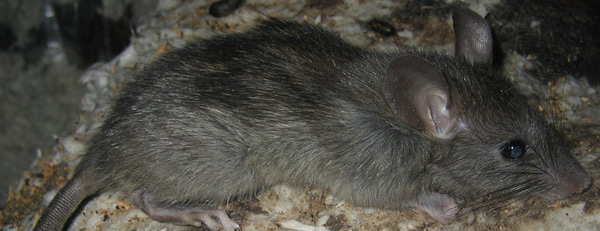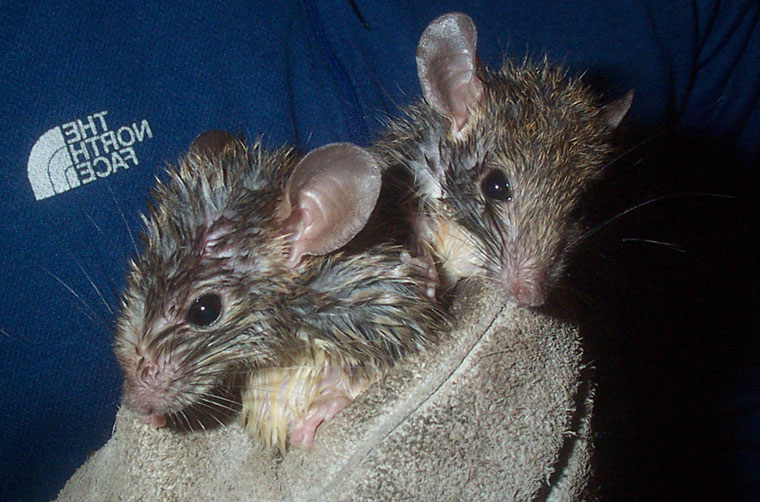- info@wildlife-removal.com
Call us for help in your town
Wildlife Removal Education
Do Rats Carry Rabies?
Need rat removal in your hometown? We service over 500 USA locations! Click here to hire us in your town and check prices - updated for year 2020.
What Is Rabies?
Rabies is a zoonotic viral disease that can be transmitted from animal to animal and from animal to human via the infected animal’s saliva. Thus, humans can get infected by the virus if:
- They are bitten by a rabid animal
- An open wound or cracked skin gets licked by a rabid animal
- They have been scratched by claws covered with saliva from a rabid animal
Rabies cannot be transmitted through urine or blood, or via petting a rabid animal. Once the virus gets into the human body, it would attach itself to nerve cells and gradually destroy the nervous system. If the situation is not medically arrested, the rabies goes on to attack the brain, finally killing its victim.
While all animal bites are potentially dangerous and should be given prompt attention, individuals that get bitten by primary rabies-carrying animals must of necessity receive immediate medical care. This is so, even if the bite is small and appears not infected. This is because of the high risk associated with contacting the disease.

Rats as Carriers
According to the Centre for Disease Control (CDC), rats and other small rodents have not been known to transmit the rabies virus to humans. Although there are rare cases of wild rats transmitting rabies outside of the United States, the primary carriers of rabies are raccoons, bats, foxes, skunks, and coyotes. It is altogether rare for rats, mice, squirrels, hamsters and gerbils to be infected with rabies.
Rats are therefore not considered to be a serious risk in the transmission of rabies disease. It is not necessary to take rabies shots after being bitten by a rat, although victims should seek medical attention to forestall the transmission of other infections.
The Dry Bite Theory
It is believed in some circles that rats have a dry bite. This suggests that even if a rat were to survive the rabid bite of a bigger animal and then gets to bite a human, transmission of the rabies virus would be impossible because the rat has a dry bite.
It is believed that the forward position of rat teeth prevents the teeth from being wet with saliva. And since rabies gets transmitted via saliva of infected animals, it means that an infected rat would not still be able to transmit the disease with a bite.
However, this is not true because rats have been known to transmit other saliva-borne infections like rat-bite fever, septic arthritis, and ratpox.
What Does a Sick Rat Look Like?
A sick rat can look very much the same as any other rat - behaving the same, physically appearing to be the same, and even eating or sleeping the same. There's a slim chance that you'll be able to tell that a rat has a particular affliction just by looking at it. Certain diseases, many of which can also be passed on to humans and other animals, actually come with very vague symptoms, often confused with a number other medical conditions. This is the case for people too - the earliest symptoms of many rodent-borne diseases are a bit generically vague, not pointing to any one condition.

Rabies, for example, is very dangerous in its later stages, but earlier stages can make you feel like you just have a bit of a cold, or nothing at all. Incubation periods differ from disease to disease, but rabies can take anywhere from one week to many months to show symptoms. A rat could easily be infected with the rabies virus without showing any physical symptoms whatsoever. If that rat were to bite you, however, the virus would be passed from the rat's saliva to your bloodstream and you would likely become infected with rabies too. It is very rare for humans to get rabies from rats, but there have been a number of documented cases around the globe.
When a wild rat is sick, it will often look fine or a tad slower than usual. It might be a tad underweight and have a loss of appetite. If any disease is in the earlier stages, symptoms might include muscle aches, a fever, joint and muscle pain, etc. These aren't symptoms that you'll pick up on just by looking at the animal, and you shouldn't get close enough to a wild rat to be able to make physical contact with it. You won't know by looking at a rat whether or not it is experiencing a slight case of the flu.
A sick rat can look many things, but most dangerously, it can look absolutely fine. It can transmit rabies to other animals and people without even displaying symptoms of the virus itself, and the same can be said for a number of other rodent-borne diseases - Hantavirus, Tularemia, etc. Rats are also carriers of smaller disease hosts, such as fleas. It was fleas that carried the Black Death or Plague around the entire world all those years ago. If a rat is carrying plague-infected fleas around with it, you'd never know.
Keep your distance when there are rats around, and make sure that the other members of your household know to follow suit. You CANNOT tell just by looking at a wild rat whether or not it is infected with something that could cause great harm to you and others around you, and because of that, you should assume that every single rat is potentially a disease host.
Go back to the Rat Removal page, or learn tips to do it yourself with my How to Get Rid of Rats guide.


















